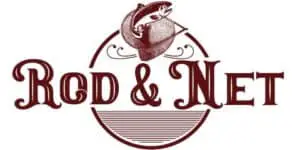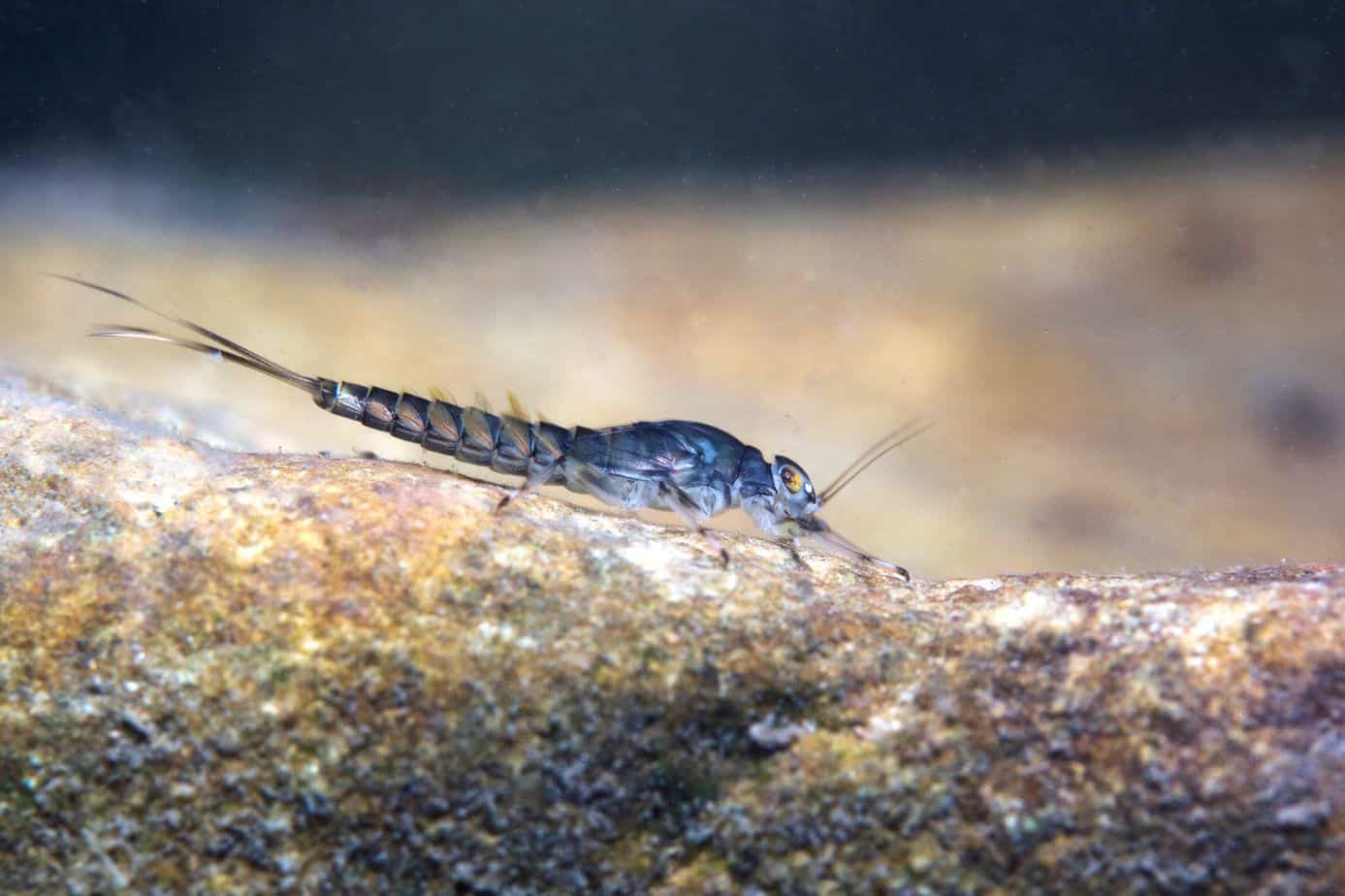Nymphing is a fly fishing style that uses flies that imitate subaquatic insects of various maturity stages- nymphs, emergers, and pupa. It presents them near the bottom where fish naturally look for them instead of the surface where flying insects typically are.
Nymph fly fishing is the pinnacle of fly fishing because it requires discipline and technique.
Nymphing Overview
Fishing nymphs, nymph fly fishing, or nymphing, originated in European countries and is sometimes called “euro nymphing.” Regardless of what you call it, the technique itself is very effective.
Many fish diets, particularly trout, consist of 70 to 90 percent of nymphs or subsurface insects in their various growth stages. Typically, the trout spend most of their time within a foot off the bottom where the current is slower, allowing them to stay in one place without expending a lot of energy.
A dry fly simply floats on top of the water, and you simply allow it to float the current in a natural presentation, waiting for a fish to rise and grab it.
To fly fish nymphs, you must present the fly naturally underwater, which is not always visible. Not seeing the nymph makes it difficult to determine both when the fish strike or if it looks natural or not.
For effective nymphing, an angler must have a good idea of the following:
- Where the fish are at
- How deep the fish are
- The bottom composition
Fly fishing nymphs can sometimes be frustrating without this information because the fly can get snagged on grass, rocks, or debris.
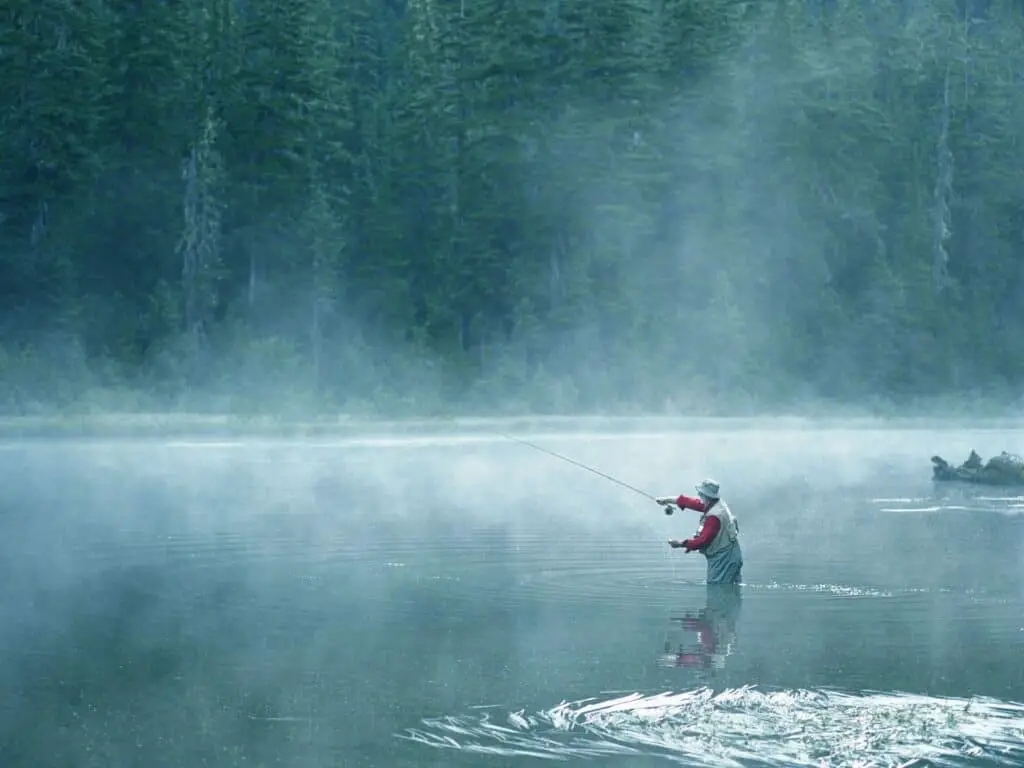
Common Nymph Fly Fishing Techniques
Successful nymph fishing requires a basic understanding of a few techniques. These techniques will help present the nymph fly in a natural drift.
You will also want a good euro nymphing leader like this on from Trident.
Some of the basic nymphing techniques include wet swinging, stripping, indicator nymphing, high-sticking, or two-fly rigs.
Wet Swinging
Wet swinging is the most basic and most straightforward form of nymphing.
Wet swinging nymphs is simply casting across a current and letting the fly line pull the fly downstream as the surface current is faster than the subsurface current.
It is easier to wet swing if you can either see the fish and the fly or use a strike indicator.
Quality polarized sunglasses are a must for almost any fly fishing style but particularly useful for wet swinging. Check out these from Costa Del Mar.
Stripping
Stripping is primarily for still-water fishing where the angler is giving life to the fly or nymph. There is no current to use, so the angler retrieves the fly with various speeds of stripping the fly line.
The speed depends on the fly or nymphs used and the target fish species.
Indicator Nymphing
Indicator nymphing uses a strike indicator. Strike indicators are a small float similar to a bobber that rides on the water’s surface and helps the user know when to set the hook.
The strike indicator can also help keep the fly at the right depth in the water column.
Want to know more about strike indicators? Read, “Best Strike Indicators For Fly Fishing.”
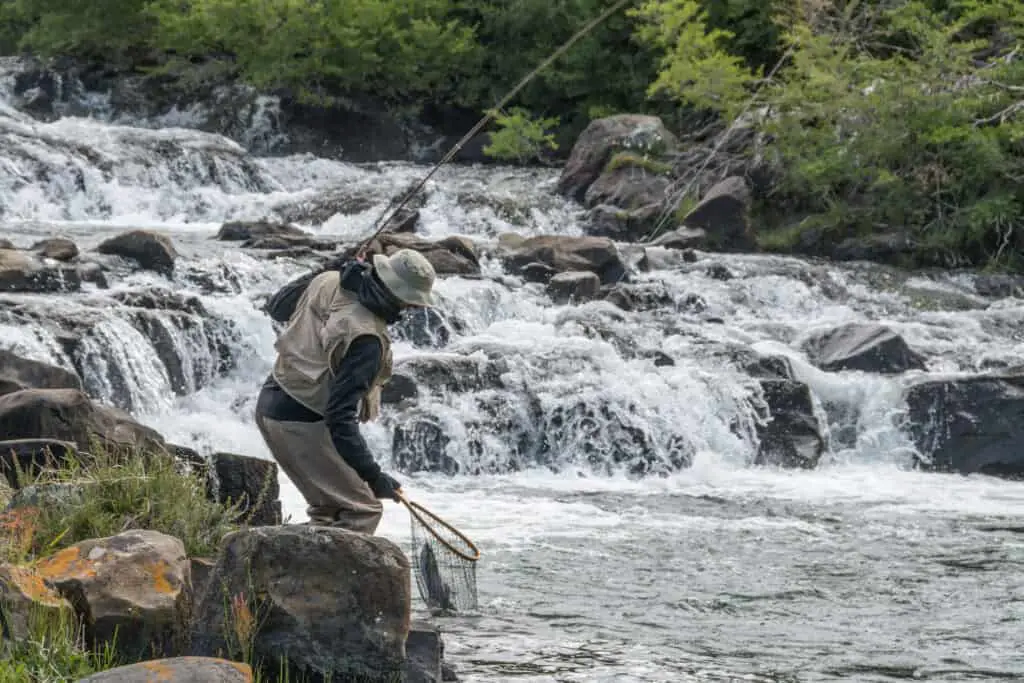
High Sticking
High-sticking is a more advanced technique.
High sticking nymphing requires the angler to hold the rod tip up high to keep the line taut and off the water. This method allows for a more natural drift with just the tippet and flies being in the water.
When high-sticking in an area where you can’t see the fly, look for the line to twitch, or you can feel the bite through the rod.
Two Fly Rigs
Two fly rigs are a reasonably simple technique that uses two nymphs or a dry fly and a nymph simultaneously. The dry fly can act as a strike indicator while also being another food offering.
Using two nymphs allows you to figure out where the fish are feeding in the water column.
The second fly is known as the “dropper fly.”
Avoid this technique in areas where there are plenty of snags or debris.
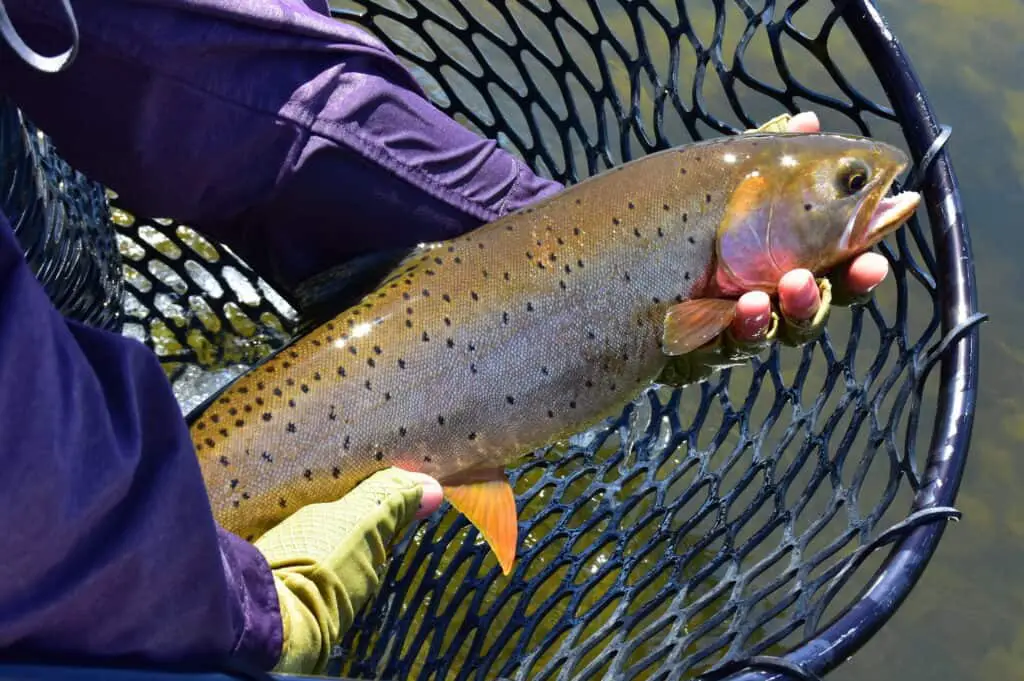
Nymphing Gear
Selecting the correct fly is an essential aspect of this style of fishing.
But it doesn’t need to be expensive. Ask a local fly shop or simply turn over a few rocks in the stream. You can also read about some more affordable fly fishing gear here.
Nymph fly patterns can imitate mayflies, stoneflies, caddisflies, midges, or scuds. Doing your research and having various flies to offer can help set you up for a successful day on the water.
You can pick up a good starter set of euro nymphing flies from Amazon here.
Presenting the fly at the right speed and depth can make a big difference too.
The weight of the fly itself or the addition of little split-shots can help adjust the depth and is a critical variable in successful euro nymphing.
The correct fly is only the beginning, though. While rods and reels are a personal preference in this fly fishing style, leader material is essential.
Regardless of brand, leader material should generally be as light as possible and as long as possible.
Traditional indicator nymphing situations may call for a nine-foot leader with the necessary amount of tippet material attached.
Euro nymphing leaders can be 18-20 feet in length from fly line to fly. The nymphing presentation has to be as natural as possible. If the leader is long and light enough, it will prevent the fly line or heavier leader material from dragging the fly in an unnatural presentation.
Some competitions and state laws require leaders to be specific lengths and weights. Be sure to research your particular location before venturing out to avoid a costly ticket.
Conclusion
Nymphing is just one more tool in a fly fisher’s tackle box. Some argue that nymphing (without an indicator) is the purest form of fly fishing.
That is subjective, but nymphing certainly does require finesse, discipline, and skill on the angler’s part.
Do not let that intimidate you. It only takes a little practice and trial and error to get good at the technique.
Good luck, and have fun!
